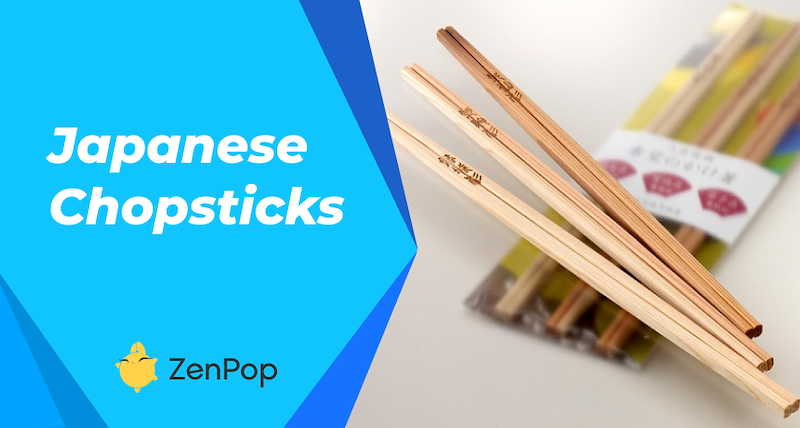
</title><meta name="robots" content="noindex"> What are the types of Japanese chopsticks? (and how to use them)
Chopsticks are a staple of Japanese culture. Imagine Asian culture without chopsticks… it’s inconceivable, almost sinful. Today, many people from all over the world use chopsticks, however, some people still don’t know how to use them. That is why in this article, we will cover how to use chopsticks in Japan.
In Japanese early history, chopsticks were believed to be a bridge between the heavens and the earth. They were a symbol of divine presence amongst men. Thankfully, over time chopsticks went from being a holy symbol to daily eating utensils most commonly used for eating ramen or sushi.
Types Of Chopsticks In Japan
This may come as a shocker but Japanese chopsticks ARE NOT the same as Chinese or Korean chopsticks. They are the shortest in this category and tend to taper down to a pointy end. That being said, here are the different types of Japanese chopsticks;
Waribashi
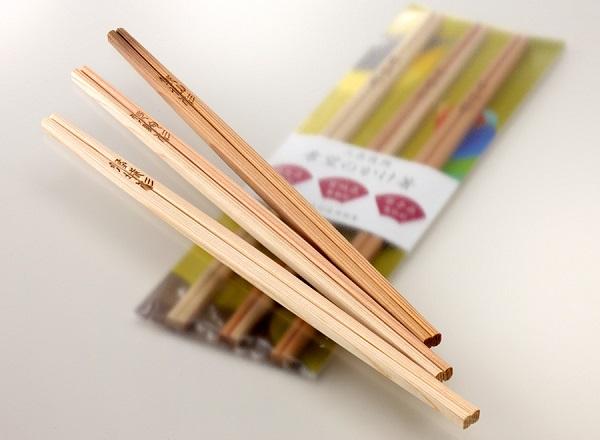
These chopsticks are manufactured to be disposable after use, but they are not low quality. They are made using trees like bamboo. The wood is unbleached, and no fungicides are added, so the chopsticks would produce a very natural and relaxing aroma. You’d find these types of chopsticks in most restaurants in Japan.
Pokebashi
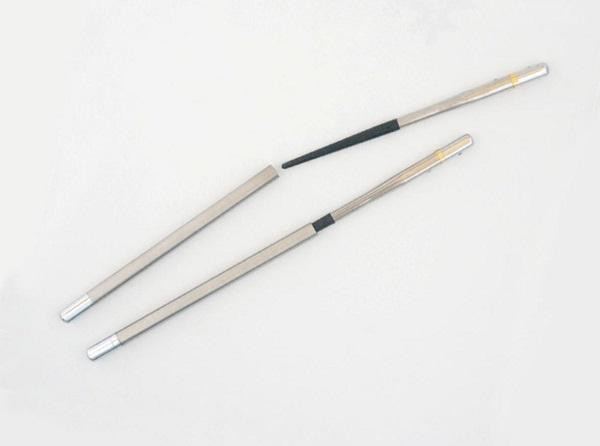
These are portable chopsticks you can carry in your pocket for convenience, hence the name poke-bashi. These chopsticks are made from fire-resistant steel and are lightweight, so you don’t have to worry about them. Pokebashi have an advantage over waribashi because they can be used over and over again.
Saibashi
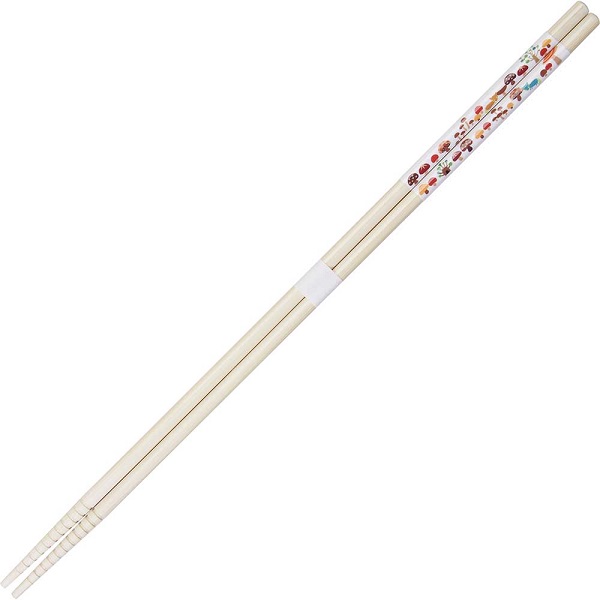
Saibashi is used akin to thongs in Japanese kitchens - cooking thongs. They are typically 7 centimeters longer than average chopsticks and slightly thicker too. They are incredibly easy to use, and one might find them more versatile than many other utensils in the kitchen when it comes to picking up hot foods. Outside of their practicality, they are such elegant utensils that they make for aesthetically pleasing additions to any kitchen.
Manabashi
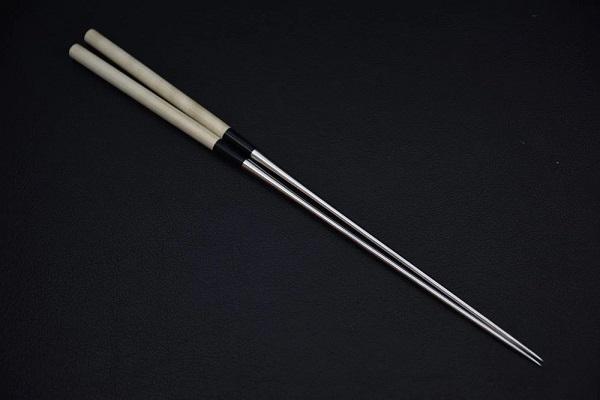
These are quality stainless chopsticks with wooden handles. These chopsticks are used specifically to serve food on another plate, not for eating. As a result, they are longer than, say, pokebashi or hashi.
Just like how Japanese chopsticks are different, there are also different bowls used for ramen in Japan. Click here to read our Japanese bowl article.
How To Use Chopsticks Step By Step?
Most people who aren’t Japanese are used to eating their food with other cutleries. One could get by eating Japanese noodles with a fork, but sometimes that attitude just won’t fly. Here are steps to picking up some basic chopsticks skills;
- Using the dominant hand, hold the chopstick a few inches beneath the broad end; remember that you eat with the narrow end. Do not hold the chopsticks.
- Hold the chopsticks firmly between the index finger and thumb. The lower joint of your thumb as well as the ring finger, will act as pivots for the chopsticks to move.
- The other chopstick does all of the work as regards getting the food from your bowl or plate and into your mouth. To pick up and drop food, you simply move one chopstick and the other stays stagnant.
Short Video On How To Use Chopsticks
That’s about it. It might seem more daunting at first glance but using chopsticks is rather an easy affair, practice a little bit, and you’ll become a chopsticks-wielding sensei in no time at all.
Is It Disrespectful Not to Use Chopsticks In Japan?
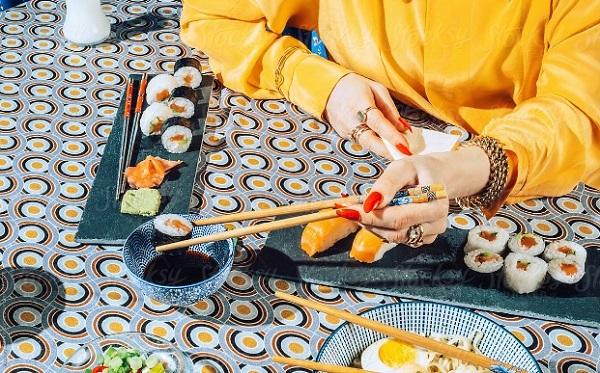
As for whether it is rude not to use chopsticks in Japan, the answer is no. In fact, there are other foods in Japan that you eat with a spoon, so it’s not as though the only cutlery that exists in the country is chopsticks. However most people use chopsticks for ramen, check out this article for the ultimate guide for Japanese ramen.
There are many etiquettes involved in eating with chopsticks, some of them might be unknown to most people, and if you find yourself in an unfamiliar setting, it is advisable to avoid chopsticks until you are sure of all the nuances involved with the setting. However, if you are curious about these etiquettes, here are a few of them;
- When you go to eat out in Japan, you normally get waribashi to eat with. After breaking the chopsticks apart, do not rub them together to remove the splinters. This signals to the host that you believe that they have offered you cheap, low-quality chopsticks, which isn’t a very nice thing. Instead of rubbing them together, you can discreetly remove any splinters that you find on your chopsticks.
- Do not stand your chopsticks vertically in the bowl when you’re done eating. This is the most common taboo in Japanese chopsticks etiquette.
- Don’t use your chopsticks like a fork or a harpoon. Stabbing your food with chopsticks is considered bad table manners. It is advisable to pick up a fork if you prefer to eat this way.
- It is unhygienic to take food from a shared plate with the chopsticks you’re eating with. Manabashi are chopsticks made specifically to fill the purpose. It is the same thing with passing food directly from one pair of chopsticks to another.
Why Do Japanese Put Chopsticks Horizontally?
Most people notice that the Japanese folk have a specific way of placing their chopsticks on the bowl. In most cases, chopsticks are placed horizontally on the bowl and not vertically. Standing your chopsticks in the bowl is a tradition done by the Japanese to honor the dead at a funeral; doing this while eating with a friend or amidst colleagues at work can be considered rude, and it is believed to bring bad luck.
There’s something special about eating food with chopsticks, and it adds a uniquely Asian feeling, coupled with the smell and texture of the wood. You can practice alone to master the proper ways to use the chopsticks, so you don’t fumble them in public, and you’re good to go.
If you are just a little obsessed with Japanese culture, you're in luck. Here at ZenPop Japan, we offer ramen packs that can give you a taste of Japan.
This article was originally written by our freelance writer Umm-Kulthum Abdulkareem and edited by us.

